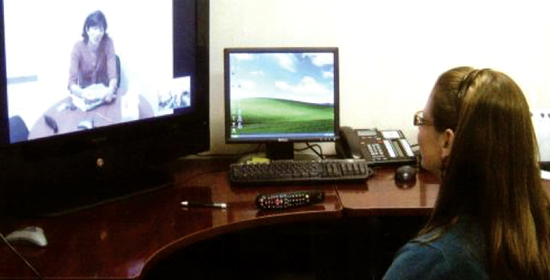
Responding to the needs for mental health services of underserved clients in rural areas of its region, the Texas A&M Health Science Center's (TAMHSC) Telehealth Counseling Clinic (TCC) is providing telehealth counseling to four counties in southeast Texas. Delivered via videoconferencing equipment, mental health counseling is given to patients who would otherwise lack such services.
Doctoral students in TAMHSC's APA-accredited Counseling Psychology program, supervised by doctoral-level staff, provide videoconferencing counseling to individuals at rural clinics. Dan Basile, Executive Director of Finance and Administration at the HSC, reports that students in the program are enthusiastic about the experiences they are getting as they prepare for their careers in health services through the telehealth program and that the students believe that the technology is virtually equivalent to face-to-face counseling in clinic offices.
The technology used in the program connects sites in Leon County, Madison County, Washington County, and Grimes County to two sites on Texas A&M's campus in College Station where doctoral students interact directly with patients over high-quality Tandberg videoconferencing units. Connections between the remote sites and the A&M campus are over high-speed TTVN network circuits that use LEARN's fiber. VPN tunnels between the sites as well as Tandberg encryption insure HIPAA compliance for privacy and security. The system is Using Networking to Deliver Mental Health Services at the Texas A&M Health Science Center utilized heavily, with about six hours a day being a typical schedule for the videoconferencing system.

Faculty in the doctoral program say that the experience the students get counseling rural residents can translate well to post-graduation jobs as therapists for other underserved populations, such as veterans and inmates. Students get training and experience with the technology and with different populations - experience that will serve them well when they begin their professional practice. And studies have shown that there are no significant differences between in-person and telehealth counseling sessions. The counties served are also able to reduce the cost of delivering mental health services since their clients don't have to travel miles to obtain the help they need.
The innovative telehealth service that TAMHSC has begun is one more example of how new technological advancements, delivered over state-of the art fiber networking, can improve our country's health delivery system.